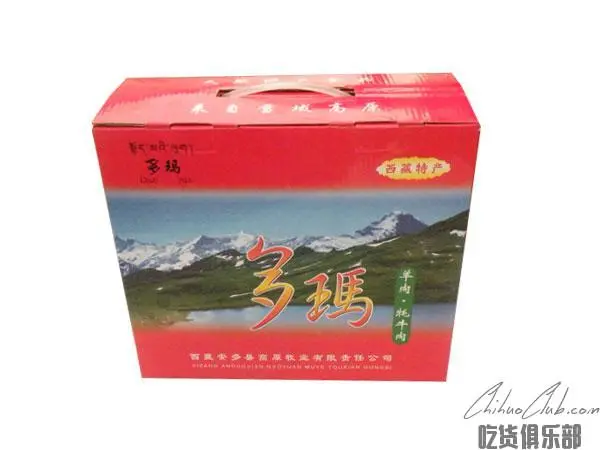
Dorma Mutton
-
Update date::
-
Date of protection::
-
Protected range:The origin of Doma mutton is the administrative area of 6 townships in Yanshiping Town, Maqu Township, Gangni Township, Marong Township, Doma Township and Color Affairs Township of Anduo County, Tibet Autonomous Region.
-
Category:
Dorma mutton is produced in the natural pastoral area of Nagqu Andu County, Tibet Autonomous Region, with an altitude of 4,800 to 6,000 meters. Its fleshy muscles are full, subcutaneous fat, soft and juicy, rich in protein, amino acids, calcium, phosphorus, copper, zinc and other nutrients. The substance is fresh and tasteless.
From 2010 to 2013, Anduo County actively cooperated with relevant experts from the Institute of Animal Husbandry and Veterinary Medicine of Tibet Academy of Agriculture and Animal Husbandry, in the Danshiping Town, Maqu Township, Gangni Township, Marong Township, Doma Township, and Color Affairs Township. In the main producing area, a three-year monitoring of the Doma sheep production cycle was carried out. On the basis of on-site monitoring and utilization of the advanced technology of the Liaoyang City Runze Humor Meat Co., Ltd., Anduo County assisted the Tibet Academy of Agriculture and Animal Husbandry. The experts of the Animal Husbandry and Veterinary Research Institute have carried out sampling and testing of the Dorma mutton and Dorma wool, and sent the samples to the national quality inspection department for authoritative testing. They were included in one of the 72 key protected livestock species under the State Council. At the same time, Amdo County has formulated the "Doma Wool" and "Dorma Lamb" standards, including the breeding of fine varieties, production technical regulations, quality and hygiene requirements, as local standards, and is a geographical indication for Dorma mutton and Dorma wool. The successful declaration of product protection laid the foundation.
Technical requirements for the quality of Dorma mutton 1. Variety of Tibetan sheep (local strain). Second, feeding conditions 1. Breeding environment: The area is between 4800m and 6000m above sea level, with a wide range of natural vegetation. 2. 3. Conditions of the house: The lamb house is a closed-type warm circle. The sheep are housed in a simple clay fence after being returned to the country in winter. 4. Feeding management: (1) Castration: The male lamb is castrated around the age of 1 month. (2) Rear and rear feeding management: grazing in the summer pasture from April to October, the pasture is far away from the settlement, the area is large, and the pasture and drinking water are sufficient. (3) Winter and spring feeding management: grazing in the winter pasture from November to March, the pasture is closer to the settlement. In case of heavy snow, the mountain is kept in the house. (4) Standard for the release: the age of the sheep is less than 36 months. The weight range is 35kg to 70kg. 5. Deworming management: Each time in spring and autumn, each time, oral deworming is injected. 6. Environmental and safety requirements: The prevention and control of the breeding environment and epidemic diseases must comply with relevant state regulations and must not pollute the environment. Third, slaughter 1. Sheep source requirements: healthy sheep that meet the standard of delivery within the scope of production. 2. Hand peeling. 3. Storage: The steroids were acid-discharged for 24 hours at 0 ° C to 4 ° C, and frozen at -35 ° C for 12 hours to 16 hours, and then stored frozen at -18 ° C to -21 ° C. Fourth, the quality characteristics 1. Sensory characteristics: The carcass subcutaneous fat is well covered, evenly distributed, white and light yellow; the muscles are red, the muscle fat distribution is obvious, the meat is tender and the astringency is small. 2. 3. Safety and other quality technical requirements: Product safety and other quality technical requirements must comply with relevant national regulations.
Apply to:
Producers within the Doma mutton production area may submit an application to the Quality and Technical Supervision Bureau of the Nagqu District of the Tibet Autonomous Region for the use of the “Special Mark for Geographical Indication Products”, which shall be reviewed by the Quality and Technical Supervision Bureau of the Tibet Autonomous Region and reported to the General Administration of Quality Supervision, Inspection and Quarantine for approval. The testing organization of Dama Mutton is selected by the Quality and Technical Supervision Bureau of Tibet Autonomous Region in the testing institutions that meet the qualification requirements.